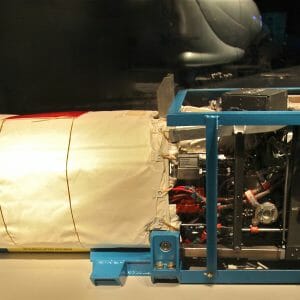Subtotal: $75.00
5
- Course No E – 1547
- PDH Units 3.00
No data found for Custom Course Number
No data found for Custom Course Units
5
- Course No E – 1547
- PDH Units 3.00
Intended Audience: for civil engineers and bridge maintenance managers interested in learning about bridge inspection and repair techniques
PDH UNITS: 3
This course provides an introduction to construction procedures for stabilizing soils. Course Outline 1. CONSTRUCTION WITH PORTLAND CEMENT 2. CONSTRUCTION WITH LIME 3. CONSTRUCTION WITH LIME-FLY ASH (LF) AND LIME-CEMENT-FLY ASH (LCF) 4. CONSTRUCTION WITH BITUMEN This course will give civil engineers and bridge managers advice and recommendations on bridge repair techniques.
Learning Objectives
At the successful conclusion of this course, you’ll be able to identify and discuss:- Learn how In soil-cement construction the objective is to thoroughly mix a pulverized soil material and cement in correct proportions with sufficient moisture to permit maximum compaction;
- Learn how bulk cement is normally trucked to the jobsite in bulk transport trucks or shipped to the nearest railroad siding in enclosed hopper cars. Compressed air or vibrators are used to loosen the cement in the hopper cars during unloading. Transfer to cement trucks is done pneumatically or by a screen or belt conveyor;
- Learn how in a mechanical cement spread, mixed-inplace construction system, a mechanical cement spreader is attached to the dump truck, and as the truck moves forward, cement flows through the spreader, which regulates the quantity of cement placed on the prepared soil.
- Learn how to properly analyze and design repairs that involve adding metal to steel bridge members and elements:
- Learn how members to be strengthened must be investigated for any decrease in strength resulting from temporary removal of rivets, cover plates, or other parts; and
- How to repair loose or missing rivets.
Course Reviews
5
5
2 ratings - 5 stars2
- 4 stars0
- 3 stars0
- 2 stars0
- 1 stars0
Once completed, your order and certificate of completion will be available in your profile when you’re logged in to the site.
Ethics Courses
Course No E - 1547
PDH Units 3.00


 E - 1124 Fuel Cells–Green Power
E - 1124 Fuel Cells–Green Power 








Good for geotechnical engineers
Useful course for determining the correct chemical additive and proper mixing procedures for stabilizing different soil types.